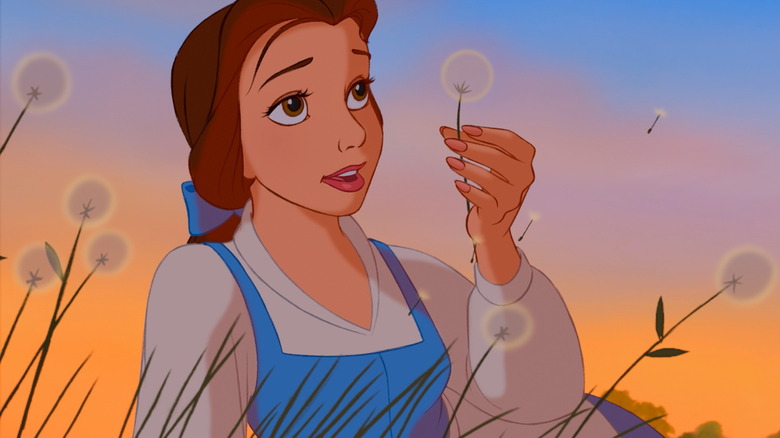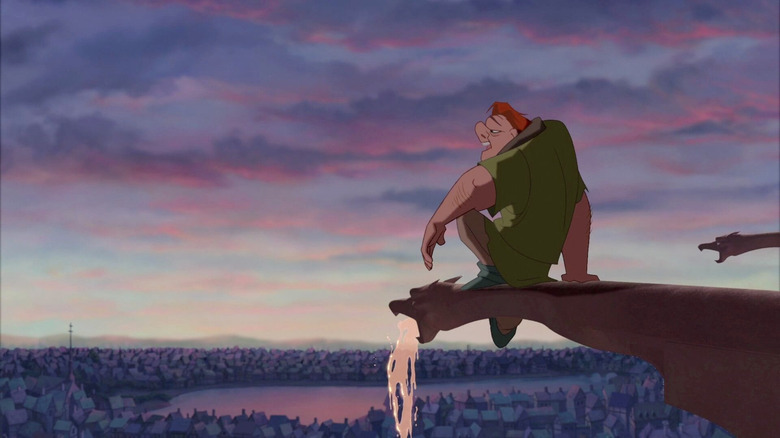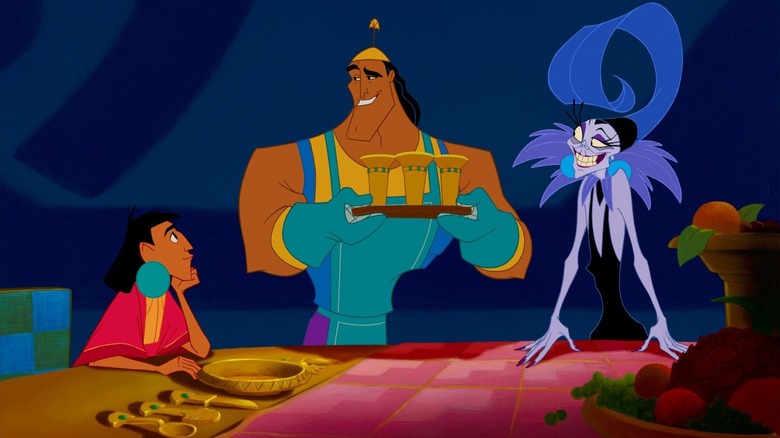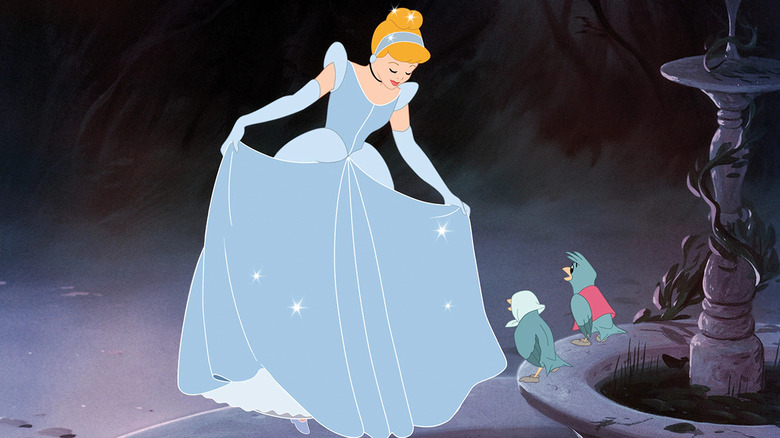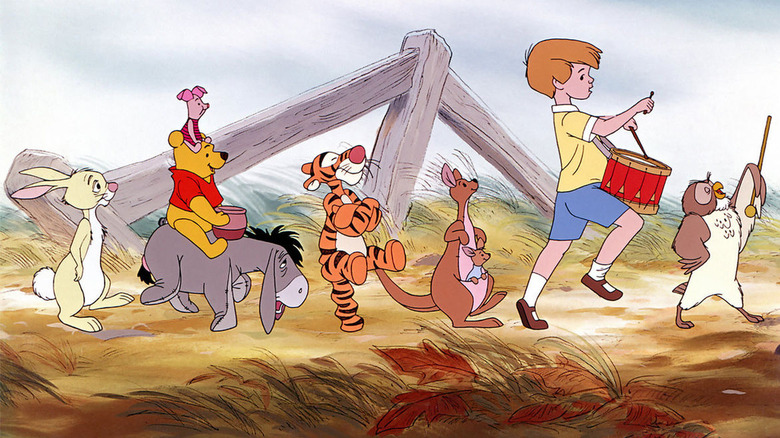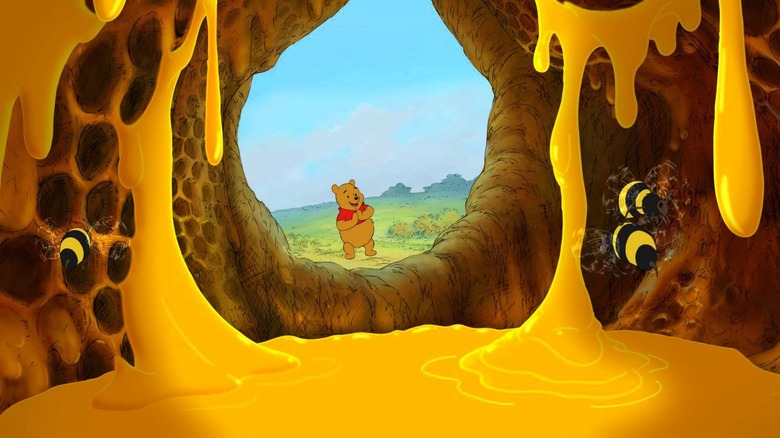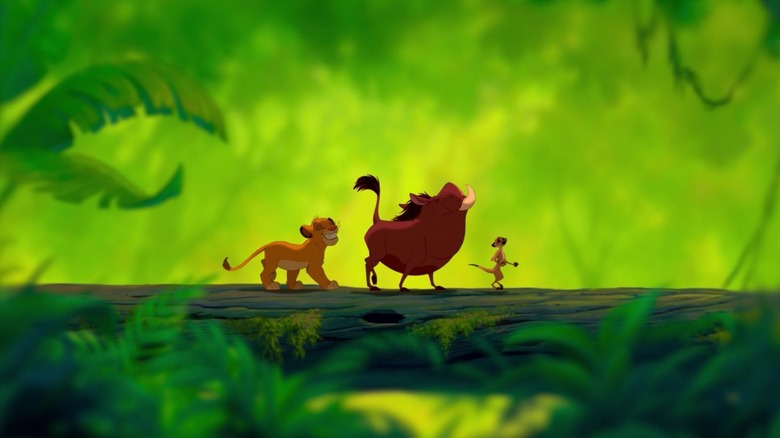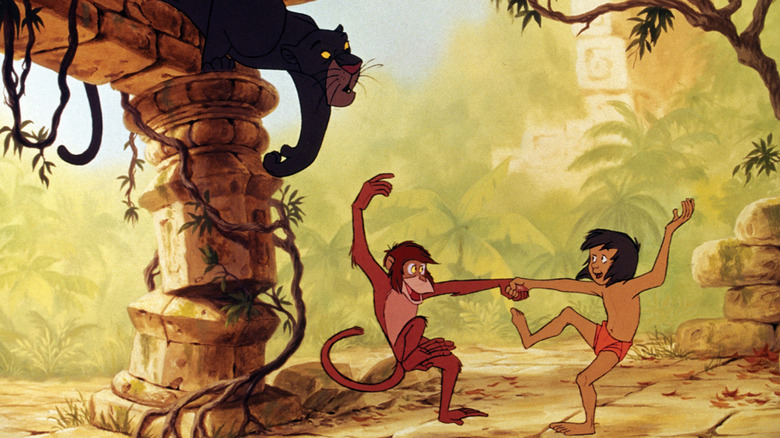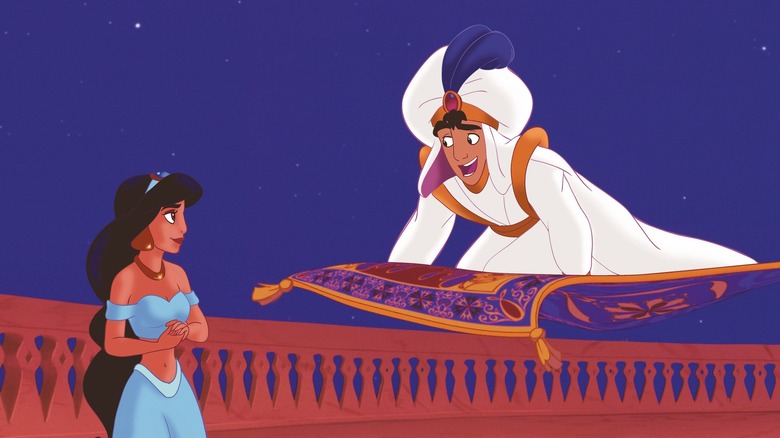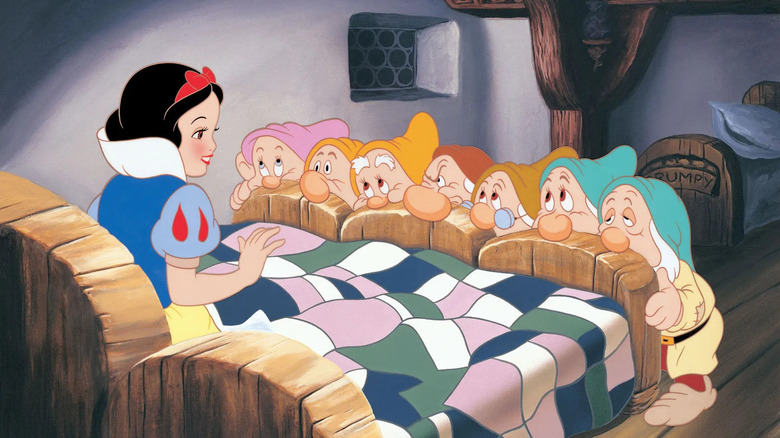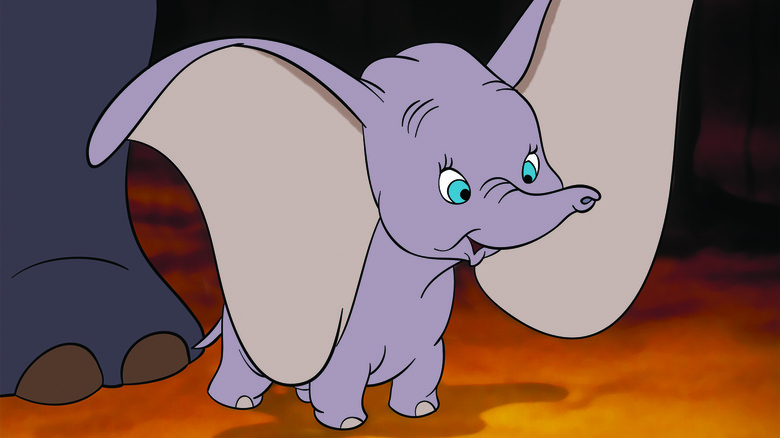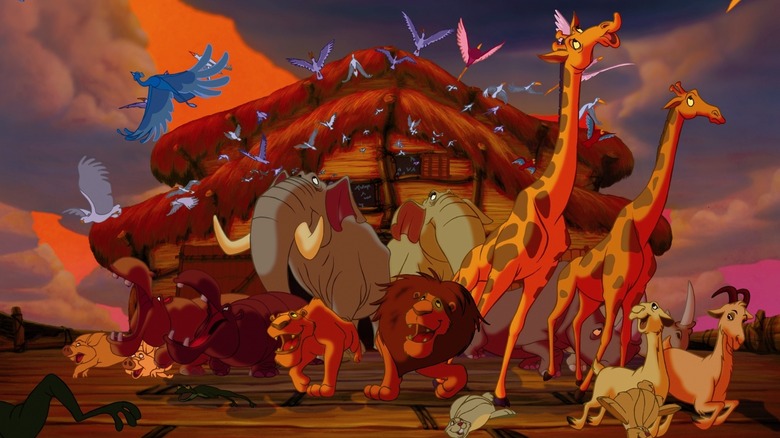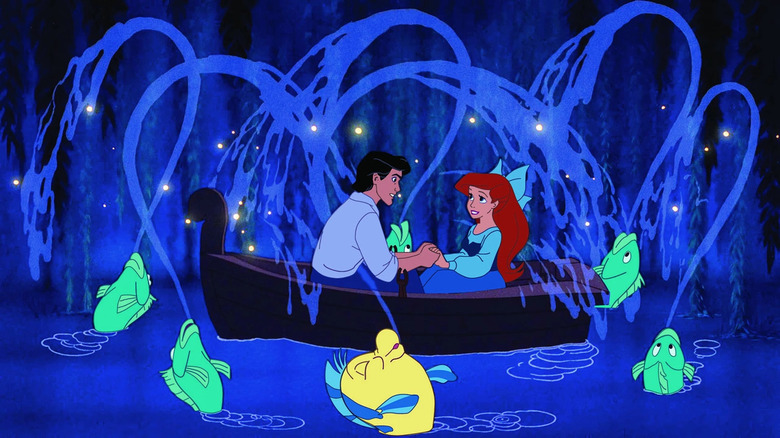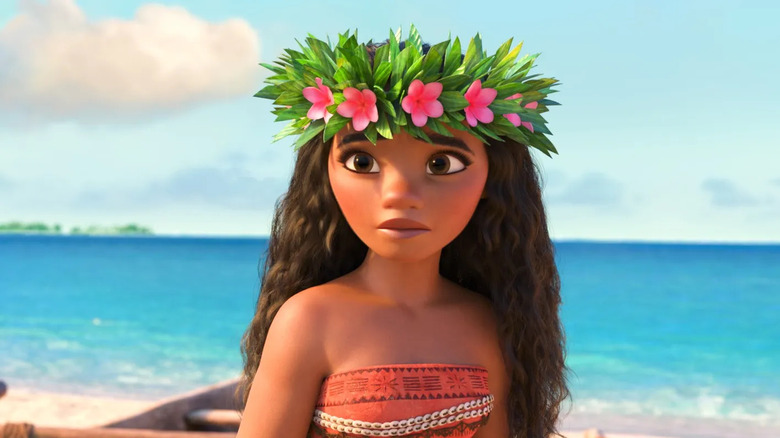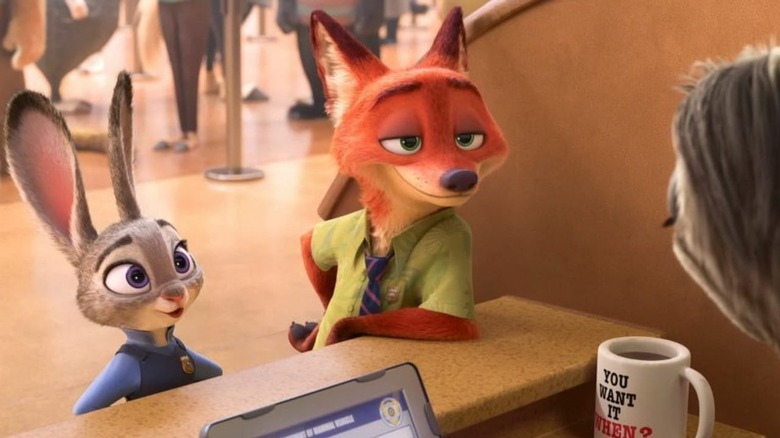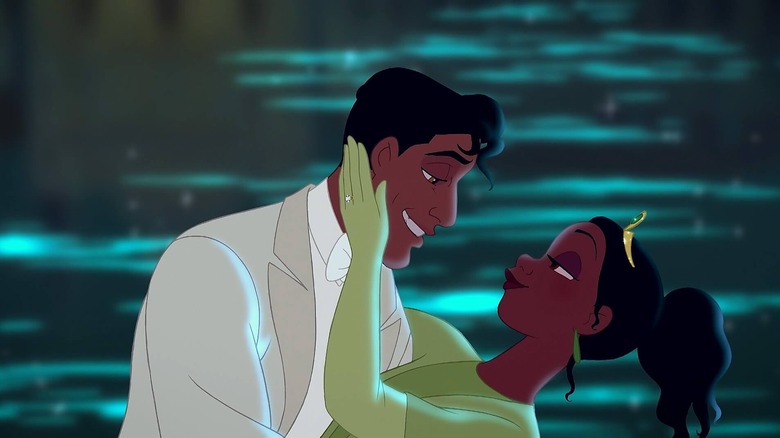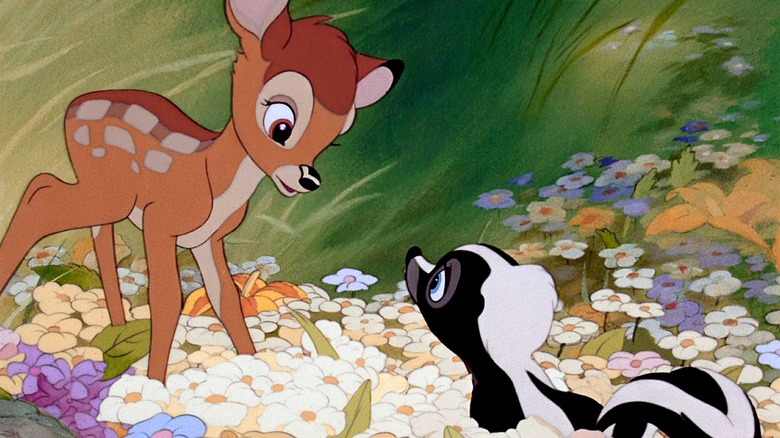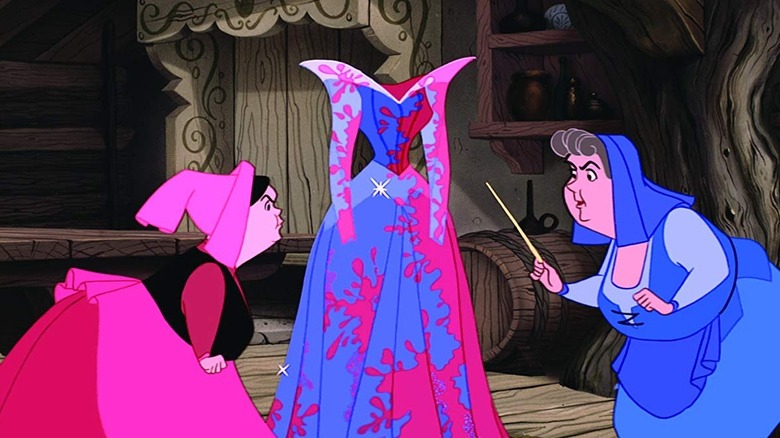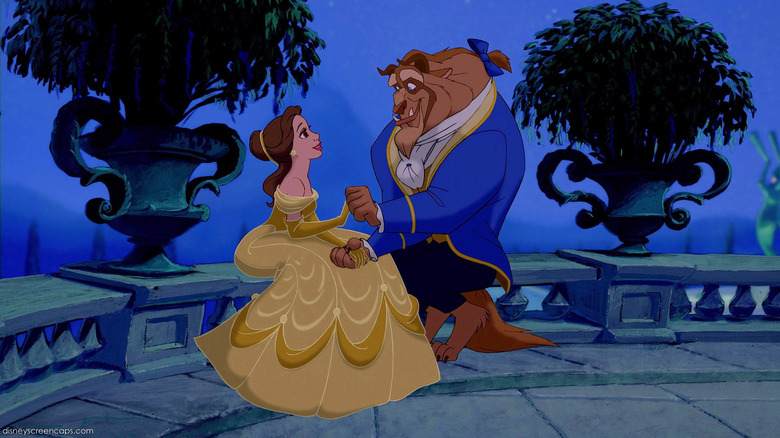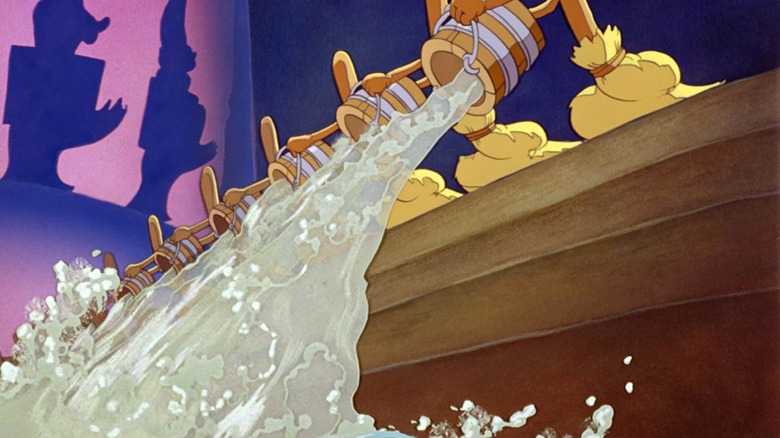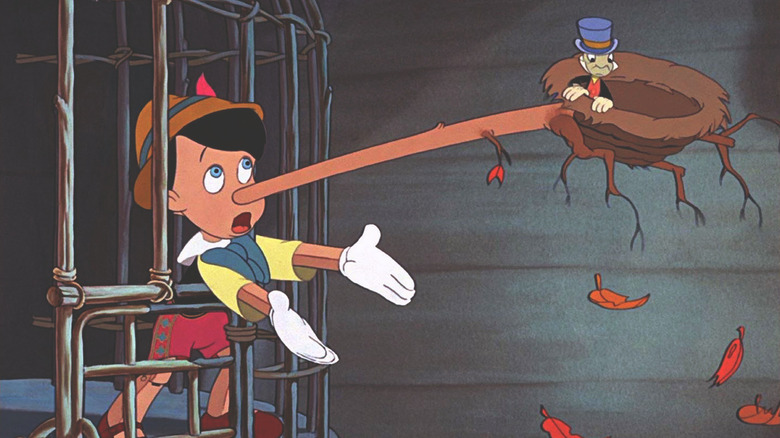All 58 Walt Disney Animation Studios Films Ranked From Worst To Best [Part Three]
(Welcome to Walt Disney Animation Ranked, a three-part series where we're ranking all 58 feature-length animated films released by the Walt Disney Company. This is the third and final part.)
What must it have been like to live in a time when feature-length animated films were perceived as folly? Growing up in the era of the Disney Renaissance means that feature animation was always just part of the family movie landscape. But the Walt Disney Company, now one of the biggest behemoths in all of the corporate world, was once on death's door and hoping beyond hope that a hand-drawn animated film would make a profit. "Snow White and the Seven Dwarfs," once dubbed "Disney's Folly," became a massive worldwide hit, and so a new storytelling medium was born. With the arrival of "Frozen II" on November 22, Walt Disney Animation Studios has released 58 animated features over 82 years. Consider this the definitive, legally binding (sorry, I don't make the rules, I just follow them) ranking of all of those 58 films.
20. The Hunchback of Notre Dame (1996)
There are few more ambitious films in the Disney animated canon than "The Hunchback of Notre Dame," because there are few more ambitious sequences or songs like "Hellfire". The majority of the film lines up (as much as you'd expect) with the Victor Hugo novel on which it's based. The kindly hunchback Quasimodo is terrorized and kept in his place in the Notre Dame Cathedral by the cruel and pious Judge Frollo, who has a problem of his own: his intense, lustful feelings for the beautiful gypsy Esmeralda, which he vocalizes in the operatic number "Hellfire". It's one thing for a bad guy in Disney's filmography to want to kill the good guy; it's another for him to nakedly wish to hook up with the heroine. "Hellfire" visually spells this out in ways that are remarkable — the film surrounding it boasts incredible animation, some equally memorable songs, and a tenderly realized lead performance. (The less said about the wisecracking gargoyles, the better.)
19. The Emperor's New Groove (2000)
Your mileage may vary with this film's placement on the list. Some people really, really love "The Emperor's New Groove" (as in, put it in the top five of Disney animated films of all time), but again ... your mileage may vary. Yes, this is a mostly different and quirky Disney film, in part because it was made very quickly, salvaging the usable parts from a much different, more dramatic take on the film that would have been helmed by one of the co-directors of "The Lion King." The end result is a glib and snarky film that asks a lot of you, specifically wanting to spend a lot of time with a man-turned-llama voiced by David Spade. Though Emperor Kuzco doesn't look like Spade, his personality is unmistakable, and if you don't like the "Saturday Night Live" alum, then this movie might be a rough sit. But even so, the jokes come fast and furious, and the villainous duo of Yzma and Kronk (Eartha Kitt and Patrick Warburton) are perhaps the funniest baddies in Disney history.
18. Cinderella (1950)
As the era of package films waned, Disney Animation had to prove itself once more, to make sure the world knew they could still make feature stories that had the power and emotional potency of their first Golden Age. So they started by going back to the world of fairy tales, which had proved so successful for them with "Snow White." The result, the 1950 film "Cinderella," had a similarly successful effect with audiences and critics. And like "Snow White," "Cinderella" has a lot of unavoidable storytelling similarities, with a winsome title character, a blandly charming prince (literally named Prince Charming), goofy comic-relief characters who wind up feeling like equal protagonists, and more. "Cinderella" is, in some ways, a step above "Snow White," but not as daring formally or visually. It was, at least, a step in the right direction again.
17. The Many Adventures of Winnie the Pooh (1977)
Depending on your definition, "The Many Adventures of Winnie the Pooh" is both a package film and barely a full-on film of its own. Primarily comprised of three short films — all of which had been made and distributed separately before 1977, "The Many Adventures of Winnie the Pooh" nevertheless felt like an introduction to the world of the Hundred Acre Wood for millions of children. The laid-back, sweet, and lighthearted stories of Pooh Bear, Piglet, Tigger, Eeyore, Owl, Rabbit, Kanga, Roo, and Christopher Robin have delighted kids for decades, and it's easy to see why. Though "Many Adventures" isn't extremely ambitious, some sequences, such as the garish "Heffalumps and Woozles," are a fine reminder that Disney animators knew how to create wild, unforgettable illustrated tableaux. And if nothing else, this film is a rarity: a truly pleasant, soothing experience for the whole family.
16. Winnie the Pooh (2011)
Unlike its 1977 predecessor, "Winnie the Pooh" tells a full story, though in an expedient fashion. (Along with "Dumbo," it's the shortest full feature, excluding package films, in the Disney canon.) As in the original, the same spirit of charm, kindness and quiet is represented here. It's a crying shame that this 2011 film is the last hand-drawn film in the Disney canon, in part because it didn't break out at the box office. (That's what happens when you open a new children's film opposite the final entry in the "Harry Potter" franchise. Who knew!) Eight years later, "Winnie the Pooh" remains an underrated Disney gem, with cheerfully witty byplay, solid songs, a fine update of the main cast (including John Cleese as narrator), and more.
15. The Lion King (1994)
No other animated film looms quite as large in the modern Disney canon as "The Lion King" does. Though during its production, Disney animators and executives presumed the film would flop, the final product is one of the biggest successes in the studio's history. The animation and music have aged remarkably well over the last quarter-century, but the story itself has always been oddly structured. Unlike in a film such as "Bambi," the death of the young hero's parent is treated more bombastically, like an action setpiece. "The Lion King" has survived the test of time thanks to side characters like Timon and Pumbaa, the gleefully camp bad guy Scar (it's one of Jeremy Irons' best performances), and memorably vibrant and colorful musical sequences. The overall arc, however, is too roughly sketched out to make the impact it should.
14. The Jungle Book (1967)
A good amount of Disney films from before the 1990s had an episodic quality, an easy way to break down sequence after sequence. "The Jungle Book," adapted from Rudyard Kipling's work, has that episodic nature all but built into the adventure of the man-cub Mowgli as he journeys to the man-village (mostly unwillingly) to escape the bloodthirsty jaws of the tiger Shere Khan. So in some ways, the film is hit and miss based on which sequences work and which don't. But those that do are among the best in Disney's canon, such as Mowgli and the layabout bear Baloo singing "The Bare Necessities," their run-in with the human-obsessed King Louie, and their encounter with a hypnotic snake. The film's slinky score, its verdant and colorful animation of the Indian jungles, and Phil Harris' irrepressible performance as Baloo help transcend its chapter-by-chapter style.
13. Aladdin (1992)
The structure of many Disney animated films is often at odds with the memories we take away from the films themselves. In the case of "Aladdin," it's easy to think of the movie as really belonging to the Genie who's let out of his lamp-like prison by the title character. Once the Genie, voiced by Robin Williams, is out, he dominates the film with his rapid patter, pop-culture references, and generally hilarious vibe. But it takes 30 of the film's 90 minutes for us to meet the Genie; as charming as he is, the romantic leads Aladdin and Jasmine aren't the most compelling. And unlike with future Disney films about people of color, Aladdin and Jasmine seem like off-brand "Beverly Hills 90210" characters than Middle Eastern teenagers. Here's a case of the animation, music, and side characters once again saving the day.
12. Snow White and the Seven Dwarfs (1937)
Say it with me: being the first doesn't equal being the best. Yes, "Snow White and the Seven Dwarfs" is one of the most influential and important films of all time, because it proved to audiences around the world and the film industry at large that animation could serve as a viable medium for feature storytelling. But with the benefit of hindsight, "Snow White" very much feels like a template for Walt Disney and his animators, as well as the countless storytellers who have been inspired by the 1937 film. Snow White is a one-dimensional lead character compared with heroines such as Belle and Ariel, the dwarves (who show up almost 30 minutes in) are the kind of comic relief who would be improved upon over time, and, hell, the prince doesn't even have a name. (He barely has a face.) And yet, there is an elemental power of creativity in the visuals, along with a fluid camera movement that was thought impossible beforehand. The animation alone is enough to vault this one high up on the list, even if the story would be improved with future features.
11. Dumbo (1941)
These days, it's easy to presume that Pixar Animation Studios has cornered the market on sadness being a prime element of its films. But Pixar only learned its lessons from Disney films like "Dumbo." The 1941 film is, in part for budgetary reasons, a very slight experience, clocking in at just 65 minutes. And even within those 65 minutes, it takes a long time for the big-eared Dumbo to take flight (the image that's so easy to associate with this film). First, baby Dumbo has to be cruelly separated from his mother, after which they have a tearful reunion through the bars of a cage during "Baby Mine," still the very saddest Disney song and sequence of all time. "Dumbo" now garners legitimate, reasonable backlash thanks to racial stereotyping (an unfortunate commonality in a number of older Disney films), yet it taps into the love and heartbreak of the parent-child relationship the way few other films do.
10. Fantasia 2000 (1999)
Arguably not as ambitious as the film preceding it, "Fantasia 2000" is still an exceedingly charming case of what happened when Disney animators were given slightly freer rein in the modern era to let their imaginations run wild. As with "Fantasia," the 1999 follow-up marries pieces of classical music to animated, dialogue-free shorts that depict everything from flying whales to a volcanic natural spirit to an ice-skating jazz musician. "Fantasia 2000" is a lot more marketable than "Fantasia," replete with celebrity guests, a shorter run time, and even more Disney characters, but it's a zippy, breathtaking variation of animated styles that implies this much: Walt Disney was right that "Fantasia" could keep going. It's a shame we've only gotten two entries over time.
9. The Little Mermaid (1989)
"The Little Mermaid" served a similar function for Disney Animation as "Cinderella" had nearly 40 years prior. Could the studio still make emotionally captivating, transportive animated films inspired by fairy tales we'd all grown up with? The 1989 film, written and directed by John Musker and Ron Clements, answered that question with a resounding "yes". The Hans Christian Andersen adaptation focused on how young Ariel trades her voice for literal legs in the hopes of getting the human experience. "The Little Mermaid" succeeds where previous films hadn't by giving its heroine a more fascinating character arc, a stronger backbone, and updating other elements in a modern enough way without feeling tied to the era in which it was released. With songs from Alan Menken and Howard Ashman that instantly, deservedly became classics, "The Little Mermaid" represented a wonderful balance of the old and new ways of telling classical stories, and is a fine example of princess-based storytelling.
8. Moana (2016)
There are some ways in which "Moana" is heavily indebted to the influence of John Musker and Ron Clements' first success, "The Little Mermaid." Both films are about the child of a tribal leader, both are very much about the water, both feature singing crabs, and both are about a young woman who wants more than the cloistered life her family makes her live. Where "Moana" improves over "Mermaid" isn't just in its incredibly eye-popping computer animation, but in its more modernist take on a heroine and the future she wants for herself. It also helps that songwriter Lin-Manuel Miranda's work is both fresh and appropriately playful, just like the songs written by Alan Menken and Howard Ashman for "The Little Mermaid." Add to that Dwayne Johnson's delightful, exuberant performance as demigod Maui and a tender finale, and "Moana" remains a recent bright spot.
7. Zootopia (2016)
On one hand, the metaphor connecting the predator and prey depicted here to people of different races is shaky at best. On the other hand, "Zootopia" is a unique, deftly paced and written film that unsurprisingly became a massive hit for Disney a few years ago, netting the studio another Best Animated Feature Oscar. In the film, set in a world where every animal is anthropomorphized and no humans exist, Judy Hopps (Ginnifer Goodwin) tries to become a successful bunny cop despite her size while partnering with the shifty fox Nick Wilde (Jason Bateman) to figure out a city-wide mystery. "Zootopia," blending the buddy-cop comedy genre with impressive and detailed world-building, is fleet of foot, extremely funny, and the rare Disney film that might not just get a sequel one day, but actually earns it.
6. The Princess and the Frog (2009)
There was an understandable amount of controversy and concern when Disney announced it would finally feature a Black heroine in one of its animated films. The studio's history with racial representation was, putting it charitably, not great, and the original logline about a New Orleans maid gave critics reason to be wary. But the final product, inspired by the "Frog Prince," is one of Disney's most ebullient, colorful, goofy, and charming films.
Starring the monumentally talented Anika Noni Rose as Tiana, a hardworking young waitress in New Orleans saving up to open her own restaurant, "The Princess and the Frog" has a depth of honesty, charm and emotion rarely seen in the studio's films. Once again from John Musker and Ron Clements, "The Princess and the Frog" also boasts one of the very best romantic relationships, as Tiana and her paramour, the louche and self-involved Prince Naveen, traverse the Louisiana bayous, meet up with a trumpet-playing alligator, and run afoul of a voodoo master. The Randy Newman songs, an exceptionally talented voice cast, and the revival of hand-drawn animation all proved to make "The Princess and the Frog" a truly special film, and one that never got its just due in theaters.
5. Bambi (1942)
There is an elemental quality to "Bambi," a film that could just as easily have been entirely silent. The mix of striking, at-the-time naturalistic animation coupled with a sprightly score that seems to be attuned to the changing seasons depicted on screen makes "Bambi" an elegiac, haunting film with an ending that can easily be read as either triumphant or tragic. Based on the story by Felix Salten, "Bambi" is one of the more literal coming-of-age stories in children's cinema, meant as a presentation of how a deer can grow from a baby to the King of the Forest, all while going through the trial by fire of losing his mother. The death of Bambi's mom is one of a handful of moments synonymous with heartbreak in childhood pop culture, but the film surrounding this gut-punch is gorgeously mounted, surprisingly tender, and almost eerie in its straightforward depiction of how nature's plan for each of its creatures rarely coincides with those creatures' dreams.
4. Sleeping Beauty (1959)
The emotional power of "Sleeping Beauty" transcends its story, achieving the same drifting, alluring and hypnotic quality of a dream that inexplicably turns into a nightmare. Some of the film's storytelling beats feel as if they're repeated from "Snow White or Cinderella," down to the fact that in her human state, Maleficent looks an awful lot like Lady Tremaine from the 1950 film about the young woman whose feet fit a mysterious glass slipper. (That Eleanor Audley voiced both villainesses aids that connection.) But the stately, stained-glass-style production design, George Bruns' arrangement of Peter Tchaikovsky's ballet, and the striking character animation make for a film that doesn't need to have the tightest story to work. When Maleficent begins her transformation into a dragon, warning the noble Prince Philip that she will unleash "all the powers of Hell!", it's a chilling, primally terrifying moment in a film full of such grandeur.
3. Beauty and the Beast (1991)
The nut that many of Disney's earlier romances had failed to fully crack was making both halves of any given love connection interesting. Most of the princess-focused stories were much more about the winsome leading ladies than their male counterparts (and even then, characters like Snow White and Cinderella were barely more than one-dimensional). The studio's 1991 masterpiece "Beauty and the Beast" managed to live up to the promise of the title, telling a story that may be focused more on the intelligent and beautiful Belle but ends up being just as much about the cruelly transformed Beast. (Yes, the youth you meet in the stained-glass prologue is rude and callow, but if you do the math, he was probably about 10 years old, if that, so it was maybe unfair to turn him into a Beast for not giving you shelter, powerful sorceress.) The late Howard Ashman's wonderful lyrics, Alan Menken's inimitable compositions, the lush animation, and a sly parody of previous Disney princes in the form of the villain Gaston helped make "Beauty and the Beast" the one and only animated film to receive a Best Picture Oscar nomination in a field of five. Hot take: it deserved to win.
2. Fantasia (1940)
"Fantasia" is the most ambitious film Walt Disney Animation Studios has ever made. Yes, it's a package film of sorts, and it does feature some memorable moments that have become iconic for the studio, from Mickey Mouse turning the stars into his personal dancing machine to a giant demon causing hellspawn to dance manically for its pleasure. But consider the basic setup: it's a two-hour film of classical music, animated shorts, no talking of any kind, only one recognizable character, and an opera commentator overseeing the whole thing. "Fantasia" was a remarkable event, and one that the studio spared no expense to see realized. Though it failed initially, "Fantasia" is one of those special films that has only grown with time, offering a showcase of the beauty and grandeur of hand-drawn animation, and pushing the medium to new, unexpected heights.
1. Pinocchio (1940)
There are few films as haunting, as heartfelt, and as thrilling as "Pinocchio." Arriving in theaters the same year as "Fantasia," this adaptation of Carlo Collodi's novel depicts the intense trial by fire that a marionette must go through to prove its worth as a possible real boy to the magical, seemingly genial Blue Fairy. ("Seemingly" because you only have to think about the tests Pinocchio must pass to become a real boy, and realize the Blue Fairy is treating this kid a lot more harshly than actual children.) From Pinocchio's relationship with his "conscience," Jiminy Cricket, to the various horrible characters he encounters, "Pinocchio" manages to feel genuinely epic in its scope and scale while always being about the pluck a sentient marionette has and the instant, unconditional love it harbors for its kindly creator Geppetto. The film's beginnings, in Geppetto's workshop, are humble, but by the end, as our hero bests a monster of a whale, "Pinocchio" achieves a level of quality the studio hasn't topped in the ensuing 80 years.
